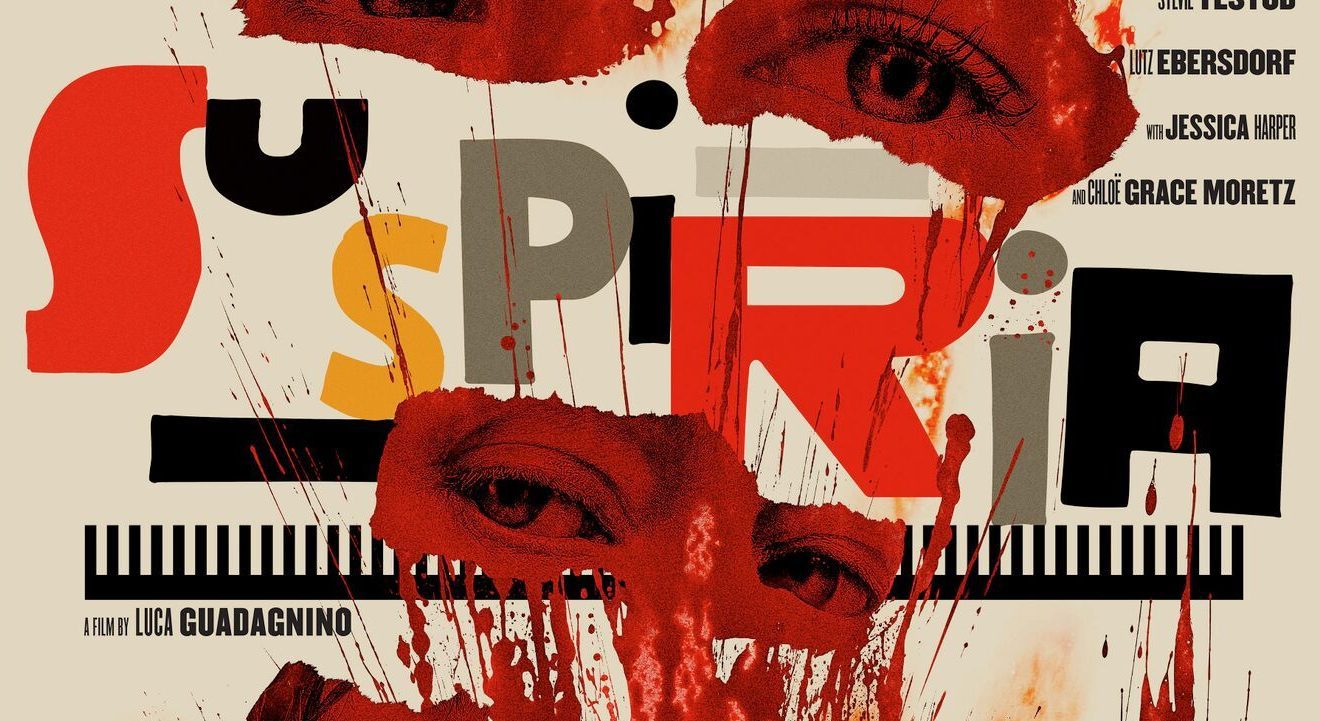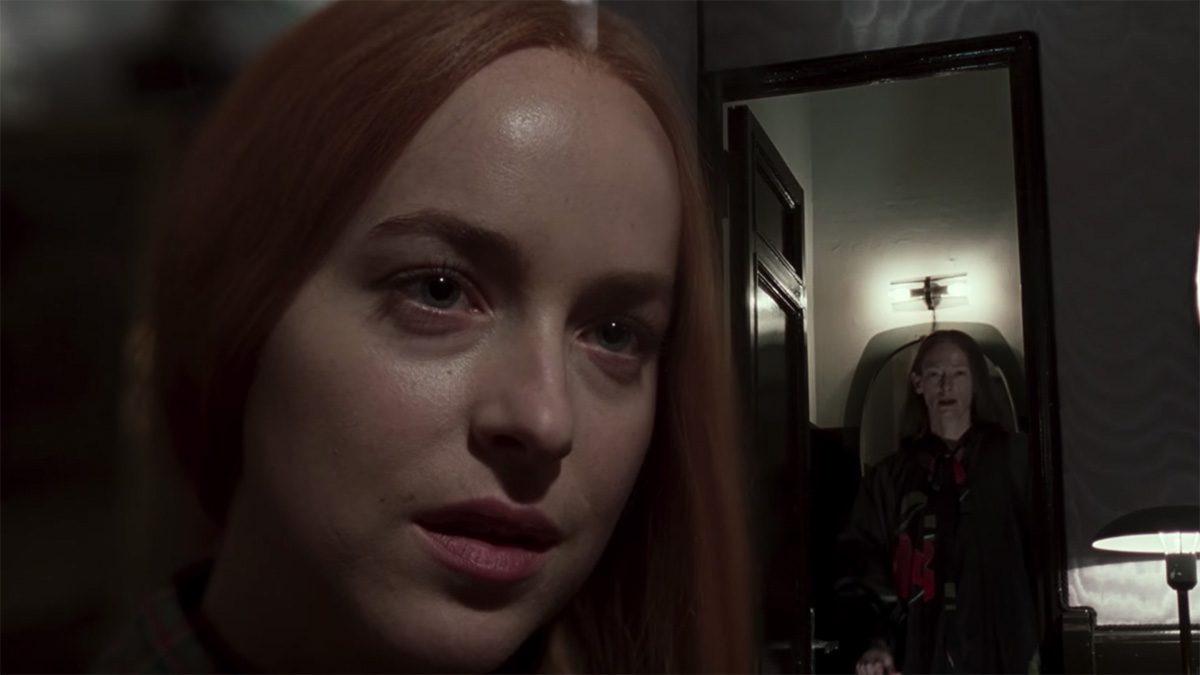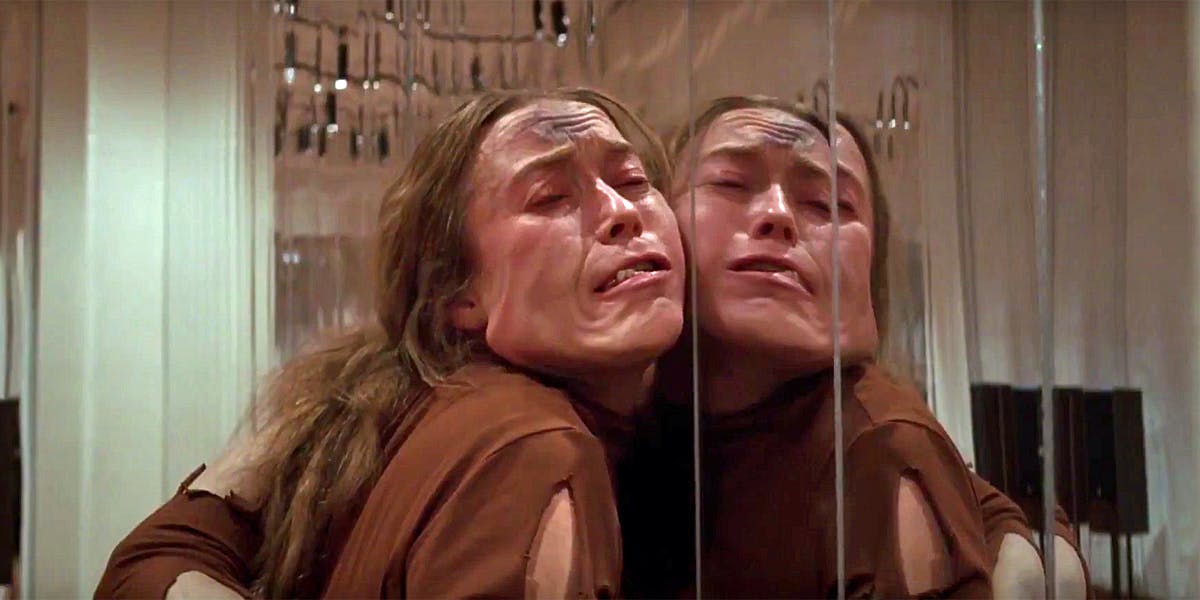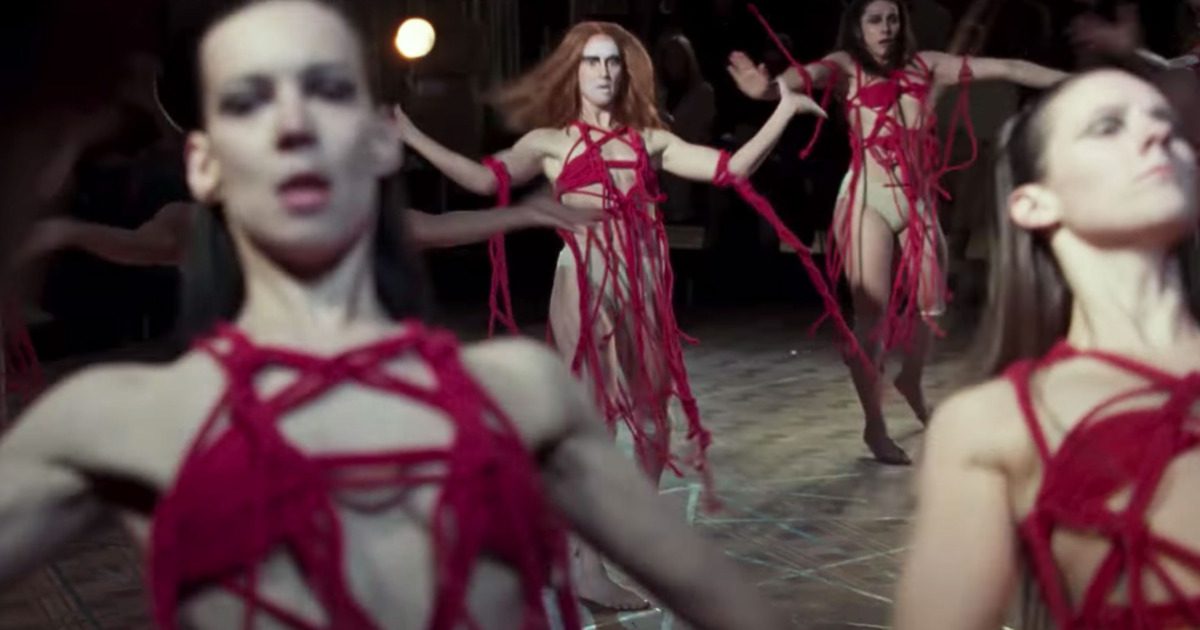The original Suspiria is a classic that became a horror film right of passage for many people. This new remake brings the wild nature of the original film and leaves you wriggling in your seat with striking visuals, quick cuts, and body horror that left theater goers at the premiere screening visibly uncomfortable in their seats.
In a world where everything goes and nothing on screen seems to shock anymore, Suspiria manages to be as beautiful as it is uncompromisingly grotesque. But none of the horror and intense scenes put on the screen feel unnecessary. The nudity, body horror and explicit gore feel like a natural extension of the world presented.
So often nudity and gore is used simply to elicit a reaction from the audience in some visceral way. But more often than not these emotions are gone in a flash and mean nothing to the core of the experience. Suspiria uses these things to craft a world of horror that will push you to your limits but won’t let you turn away because how vital these things are to core of the experience.
This is a violent film not just in action, but in visual presentation. Colors are bold, striking and the cinematography seems to be designed to put you off balance at every chance it gets. You’ll often want to turn away from the screen with the madness on display, but you know that there is something behind all of it that grips you, even if you don’t quite understand what is happening.
But what the film is trying to say isn’t as clear as most audience members will probably want. There is a message, but it can get lost within the disembowelment, sometimes disjointing editing and general length of the film. If you are looking for a film to really dissect and write a thesis paper on, Suspiria should be right up you ally.
This version of Suspiria plays along the lines of the original while being something special and more intense for the modern age. Taking place in the 1970s in West Berlin, we are initially introduced to Patricia (Chloë Grace Moretz), an American dancer at the famed Markos Dance Company who has seemingly lost her grip on reality.
She ends up at the office of therapist Dr. Josef Klemperer in an unhinged state, jumping and raving about nonsense. It’s an intense opening scene that clearly lays out what we as the audience are going to get; a trip down a rabbit hole into madness. And just as quickly as she appears, Patricia is gone, leaving behind a notebook of her ramblings and notes of what may be taking place at the academy and the apparent witch coven that runs it.
The Markos Dance Company is where the heart of the story lies and where Madame Blanc (Tilda Swinton) seemingly rules with an almost magical influence along with her matron sisters. Susie (Dakota Johnson) enters the picture, a young dancer from Ohio, who was seemingly drawn to the academy for unknown reasons. She ends up replacing Patricia as the new lead dancer, but there is more to this idyllic dance group than even its own members know or understand.
Before you have time to catch your breath, Susie is seemingly blessed with Blanc’s magic as she takes over the part of another student (Olga) and begins to dance in an almost unnatural and yet beautiful way. Dancing is so much of Suspiria and it’s like nothing you’ve probably seen before. What makes this scene in particular so powerful isn’t just Susie’s dancing, but that she has gained control of the removed dancer who ended up trapped in a room of mirrors as she got lost trying to leave the academy.
The film beautifully cuts from Susie’s grace and power to Olga being ripped apart from the inside from Susie’s motions. This balance is both horrific and beautiful, something that Suspiria does like not other. You are bombarded by equal parts beauty and body horror that will test your limits. And the film isn’t afraid to take it’s time with scenes like these. When you think it’s over is when it pushes more, when you want it to stop it ups the intensity to uncomfortable levels. You’ll be begging for it to stop, but you won’t be able to look away.
So much of Suspiria is like this. There is a grotesque beauty to the entire affair that will linger with you long after it has ended. And since this version is far longer than the original it allows Italian director Luca Guadagnino to hit you again and again before the bombastic end that is so shocking it will leave you glued to the screen in silence.
But it’s this length that causes so many problems as it simply is too much to take in one sitting. The dancing is brutally gorgeous but there are times in-between the madness where the film feels like it’s reaching for a greater meaning to everything without ever getting there. It’s a beautiful experience to be sure, but one that felt like it had at least four endings that I would have been happy with.
I know Suspiria is trying to tell me something deeper about motherhood, human nature and how there good and evil are merely constructs, but it just never really comes across in a clear manner. And by the time of the final encounter you’ll have more questions than answers, and that’s well before the film ends.
At two hours and thirty-two minutes Suspiria loses itself and feels more than a little bloated in its search for some method to the madness. And when a demon finally takes action on most of the coven of witches that run the dance academy and the twist of the story hits, you’ll be hard-pressed to piece it all together as the film has not so much slid of the rails, but that it’s slid off the rails and fired the Saturn V rocket strapped on it.
Final Score:
3.5/5
“A great re-imagining of a horror classic that works too hard and spends far too much time trying to find meaning to the madness.”
Director: Luca Guadagnino
Writer: David Kajganich
Stars: Dakota Johnson, Tilda Swinton, Doris Hick, Malgorzata Bela, Chloë Grace Moretz
Rating: R
Running Time: 2h 32m
Genre: Horror





